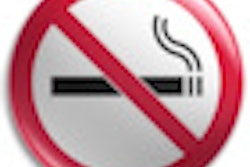U.K. children are being exposed to millions of tobacco images and messages every week on prime-time television, according to a new study in Tobacco Control (March 11, 2013).
Smoking and other tobacco content frequently feature in films marketed to kids, which is known to spark their interest in starting to smoke, noted the authors, from the University of Nottingham.
They analyzed the weekly content of all five free to air U.K. TV channels, broadcast between 6:00 p.m. and 10:00 p.m. on three separate occasions, four weeks apart, in April, May, and June 2010. The content was then coded in one-minute intervals according to whether it was actual use of a tobacco product; implied use; the presence of tobacco paraphernalia, such as packs and ashtrays; and other references to tobacco, such as a news report. The authors also looked for appearances of clear and unambiguous tobacco branding and merchandising.
In all, the 420 hours of recordings comprised 613 programs plus 1,121 advertisements and trailers, totaling 25,210 part- or full-minute intervals. Documentaries (161), news programs (139), and soap operas (72) were the most common genres.
Among the 613 programs broadcast, a third (210 or 34%) contained some tobacco content. This occurred at least once in more than half of all reality TV shows (67%), feature films (64%), and comedy (52%) programs, and in nearly half of soap operas (49%) and dramas (48%).
Over two-thirds of tobacco content (69%) featured in the 75% of hours of programs in the sample were broadcast before the 9 p.m. "watershed," which marks the line between material more suitable for adults than for children.
Based on the program content and the sizeable audience viewing figures for young people, this translates into 59 million instances of tobacco images and messages, 16 million of actual tobacco use, and 3 million of tobacco brand appearances every week, the authors noted.
Tobacco advertising, sponsorship, and promotion in TV programs are banned in the U.K., but imagery included for artistic or editorial reasons is exempt. More stringent curbs on tobacco imagery in the TV program schedule could help curb uptake among young people, who spend an average of 2.5 hours in front of the TV every day, the study authors suggested.
"We would recommend that future television programming remove gratuitous depictions of tobacco, particularly actual smoking and tobacco branding, from programs aimed at young people, or, in the U.K., scheduled before the [9:00 p.m.] watershed," they wrote.



















